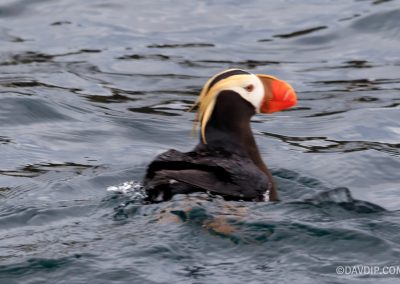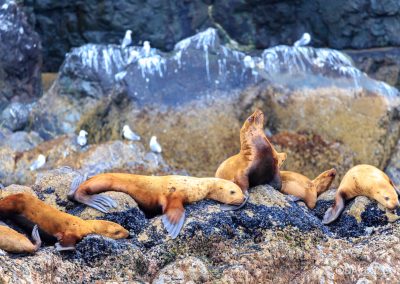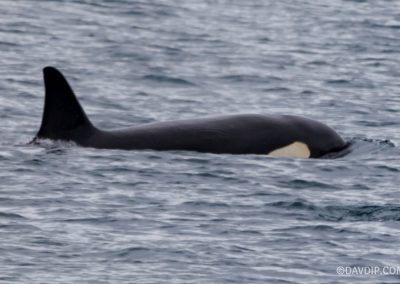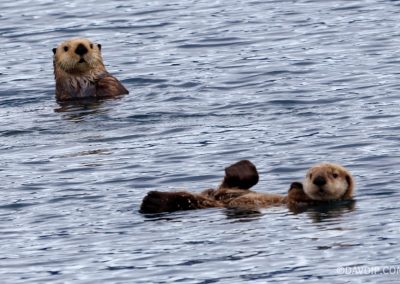Driving from Seward to Anchorage
Driving from Seward to Anchorage
This was our last day in Alaska, and the weather was gloomy and windy in the morning. It probably reflected our mood!
Our plan was to spend the morning in Seaward visiting the Alaska Maritime National Wildlife Refuge, home to a large variety of species including whales, seabirds, Stellar sea lions and sea otters, and then drive back to Anchorage, return our rental and take a late evening flight, back home to Los Angeles.
Tufted Puffin
Horned Puffin
King Eider
Our 7 year old had a great time at the Wildlife Refuge and we were able to see a lot of the birds and mammals up close. By the time we headed out and were ready to start our drive back to Anchorage, the weather had gotten worse, and it had started to rain. While, we were very fortunate and thankful, to have had mostly beautiful weather for the past 7 days, we were also a little upset that we would miss seeing most of the sights on the Seward highway. This highway extends 125 miles from Seward to Anchorage and runs through the scenic Kenai Peninsula, Chugach National Forest, Turnagain Arm, and Kenai Mountains. Some of the highlights worth stopping at are:
- Views of Kenai Lake – There are several sections along the highway that offers splendid views of the beautiful Kenai Lake. The lake was formed from glacier water is a majestic blue and green tone and provides great photo opportunities on a clear day. Unfortunately for us, all we saw was gray!
- Portage Glacier – Getting here requires a drive to Whittier, through the one-lane, 2.5-mile, Anton-Anderson Tunnel. After going through the tunnel, drive ¼ mile and take the first right past the railroad tracks to a gravel road marked “Forest Access,” and park at the end of the road. A short (1 mile) but steep (750 feet in elevation) hike gets you an amazing view of the portage glacier. Those of you with time to spare, can consider taking the trail for another three miles to get to Portage Lake, which provides an even better vantage point to view the glacier.
Considering the weather, we did not end up doing this and reached Anchorage with plenty of time to spare. After enjoying our last Alaskan ale of the trip, we bid adieu to the largest state in the US (yes, it is more than 230,000 sq miles larger than Texan and California combined!). We have some great memories of this trip and I am sure we will be back here again someday!




